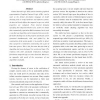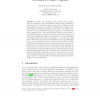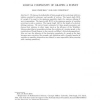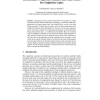4266 search results - page 79 / 854 » A Framework for Defining Logics |
IJCAI
1993
14 years 11 months ago
1993
Gelfond and Lifschitz introduce a declarative language A for describing effects of actions and define a translation of theories in this language into extended logic programs(ELP, ...
SIGPLAN
2002
14 years 9 months ago
2002
Future Interval Logic (FIL) and its intuitive graphical representation, Graphical Interval Logic (GIL), can be used as the formal description language of model checking tools to v...
136
click to vote
LPKR
1997
Springer
15 years 2 months ago
1997
Springer
Abstract. We study the relationship between argumentation (abduction) and disjunctive logic programming. Based on the paradigm of argumentation, an abductive semantic framework for...
CORR
2010
Springer
14 years 10 months ago
2010
Springer
We discuss the definability of finite graphs in first-order logic with two relation symbols for adjacency and equality of vertices. The logical depth D(G) of a graph G is equal to ...
FOSSACS
2008
Springer
14 years 11 months ago
2008
Springer
Coalgebras provide a uniform framework for the semantics of a large class of (mostly non-normal) modal logics, including e.g. monotone modal logic, probabilistic and graded modal l...




